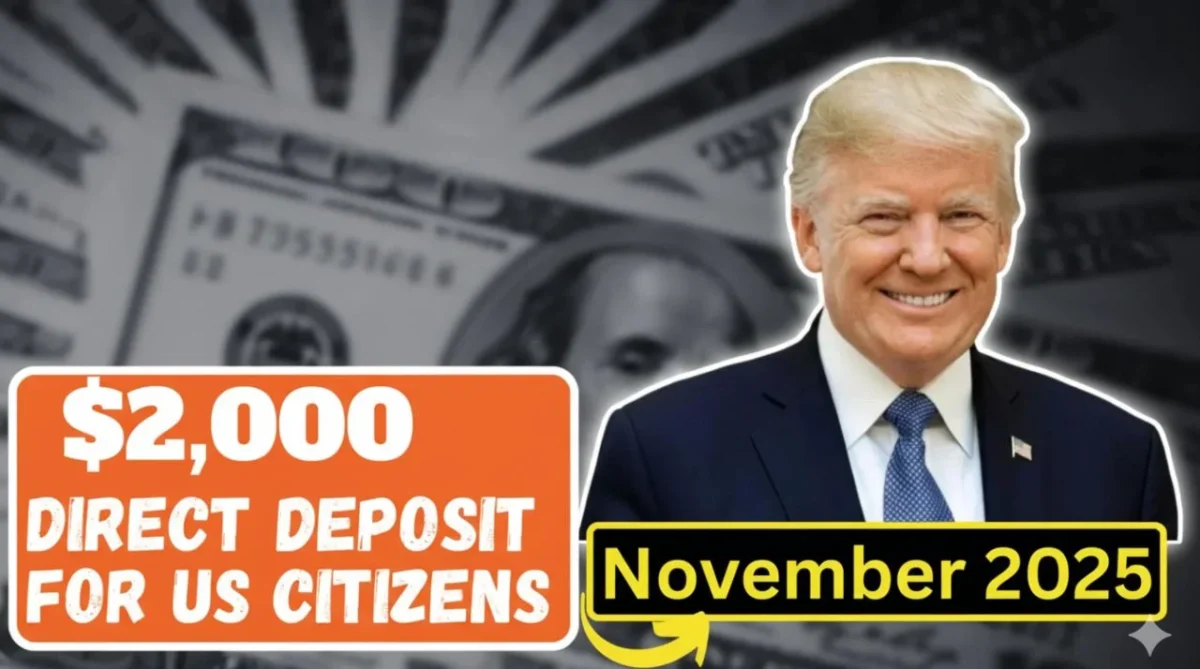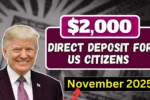$2,000 Direct Deposit Approved:- recent weeks, millions of Americans have been abuzz about the newly announced $2,000 direct deposit payments reportedly approved by the IRS. For many families, this news brings a ray of hope, especially at a time when rising living expenses are straining household budgets. While this payment is being described as a federal relief measure designed to assist low- and middle-income citizens, it’s important to understand who is eligible, how the payments will be distributed, and when they are expected to arrive.
Before diving into this, remember one thing: always rely on official IRS or U.S. Treasury updates before sharing personal information or taking any action. Currently, government confirmation is limited, and details may change as new announcements are released.
Why a $2,000 Direct Deposit Is Important
For many families, even a temporary reprieve can make the difference between paying rent, paying bills, or simply breathing a sigh of relief from month to month. A one-time $2,000 payment can have these benefits:
- Reduce financial stress during the holidays and winter season
- Provide relief for increased utility and grocery costs
- Provide assistance to the elderly, caregivers, and low-income workers
- Provide relief to families facing medical, childcare, or transportation expenses
Although this isn’t a long-term solution, it provides meaningful assistance during challenging economic times.
Eligibility Requirements
Though official IRS guidelines may evolve, most reports suggest the payment will be based on familiar eligibility criteria similar to past relief programs. Here’s what is generally being referenced:
1. Citizenship & Identification
-
Must be a U.S. citizen, permanent resident, or qualifying non-citizen.
-
Must have a valid Social Security Number (SSN).
2. Income Thresholds
The payment is expected to prioritize low- and middle-income households. The projected income limits are:
-
Single filers: Up to about $75,000
-
Head of household: Up to about $112,500
-
Married couples filing jointly: Up to about $150,000
Those earning above these limits may still receive a reduced amount through a phase-out formula.
3. Tax Filing Status
You may need to have filed a federal tax return for 2023 or 2024 so the IRS can verify your income, address, and banking information.
4. Beneficiaries Who May Qualify Automatically
Individuals receiving federal benefits may be automatically eligible, including:
-
Social Security (retirement, SSDI)
-
Supplemental Security Income (SSI)
-
Veterans Affairs (VA) benefits
-
Railroad Retirement Board (RRB) benefits
These recipients typically do not need to file additional paperwork because their information is already on file.
U.S. Driving License Changes 2025 – New Rules Come Into Effect on 9 November
Payment Date – When Will the Money Arrive?
While the IRS hasn’t provided a minute-by-minute timeframe, the estimated schedule shared from public sources suggests:
- Direct deposit payments may begin within three to four weeks of the official announcement.
- Receiving a paper check may take an additional 5-10 business days.
- Families who don’t have updated bank information may receive a paper check or prepaid debit card.
The IRS typically distributes payments in batches, so not everyone will receive a deposit on the same day. The timing often depends on tax-filing status and bank processing times.
How to Prepare
To avoid delays, it’s helpful to:
- Confirm your mailing address with the IRS
- Update your direct deposit information
- File any missed tax returns
- Check official updates on IRS.gov
Federal $2,000 Deposit Coming by November 2025 – Complete Guide for Beneficiaries
FAQs
1. Do I need to apply for the $2,000 payment?
Most people will not need to apply. If the program mirrors past relief checks, eligible taxpayers will be automatically enrolled. Always confirm this through IRS announcements.
2. Will the payment affect my Social Security or VA benefits?
Typically, federal relief payments do NOT reduce or impact other federal benefits. But final guidelines should be confirmed through official channels.
3. Is the $2,000 payment taxable income?
Historically, federal stimulus payments were not taxable. It’s expected this payment would follow the same pattern, but the IRS will provide final clarification.
4. What if I didn’t file taxes recently?
You may still qualify—especially if you receive SSI, SSDI, VA, or RRB benefits—but some individuals may need to file a simple tax return to update their information.
5. How do I avoid scams?
The IRS will never call, text, or email asking for bank details or payment information. Always go directly to IRS.gov for legitimate updates.





